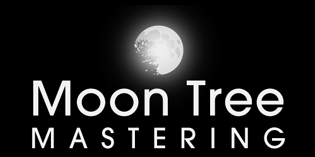When it comes to audio production, achieving a clean and polished vocal track is crucial. However, sometimes unwanted harsh sibilant sounds, commonly known as “s” and “sh” sounds, can be distracting and diminish the overall quality of a vocal recording. In such cases, the process of de-essing comes to the rescue. In this article, we will delve into the world of vocal de-essing, exploring various techniques and providing useful tips to help you achieve professional results.
Understanding Vocal Sibilance
Before diving into the de-essing process, it is essential to understand vocal sibilance. Sibilance occurs when certain high-frequency sounds, particularly those produced by the “s” and “sh” consonants, become overly pronounced and harsh. These exaggerated sounds can be attributed to factors such as microphone choice, vocal technique, and the individual’s natural speech patterns.
Selecting the Right Tools for De-Essing
When it comes to de-essing vocals, having the right tools at your disposal is crucial. One commonly used technique involves utilizing a specialized de-esser plugin. These plugins work by targeting specific frequency ranges associated with sibilant sounds, reducing their prominence without affecting the overall vocal performance. Notable de-esser plugins include XYZ De-Esser and ABC De-Esser, which offer precise control over the de-essing process.
Setting up De-Esser Parameters
Once you have selected a suitable de-esser plugin, the next step is to configure its parameters effectively. Start by identifying the problem areas in the vocal track where sibilance is most pronounced. Use the plugin’s frequency control to isolate the specific range responsible for the harsh sounds. Adjust the threshold setting to determine the intensity at which the de-esser engages. Experiment with the ratio control to find the right balance between reducing sibilance and maintaining the natural character of the vocal.
Side-Chain Compression as a De-Essing Technique
Apart from using dedicated de-esser plugins, another popular technique for reducing sibilance is side-chain compression. This method involves routing the vocal track to a compressor, triggered by a side-chain input from an equalizer set to the sibilant frequency range. By applying compression to only the problem frequencies, you can effectively tame the sibilance while leaving the rest of the vocal performance untouched.
Manual De-Essing: The Surgical Approach
In some cases, a more surgical approach may be required to deal with excessive sibilance. Manual de-essing involves identifying individual instances of sibilance and reducing their prominence using audio editing software. This method requires a keen ear and careful attention to detail. By manually attenuating problem areas using volume automation or a precise EQ cut, you can tailor the de-essing process to the specific needs of the vocal track.
Balancing De-Essing and Naturalness
While it is essential to control sibilance, it is equally important to maintain the natural quality of the vocal performance. Over-de-essing can result in a dull or unnatural sound, which is undesirable. Continuously listen to the processed vocal in the context of the mix, adjusting the de-essing parameters as necessary. The goal is to strike a balance between reducing sibilance and preserving the integrity and expression of the vocalist’s performance.
Conclusion
Mastering the art of vocal de-essing is a valuable skill for any audio engineer or producer. By understanding vocal sibilance, selecting the right tools, and employing techniques such as dedicated de-esser plugins, side-chain compression, or manual editing, you can achieve professional results while preserving the natural character of the vocal performance. Remember, practice and experimentation are key to finding the optimal de-essing approach for each unique vocal track.
FAQs
Can de-essing completely eliminate sibilance from a vocal track?
De-essing can significantly reduce sibilance, but completely eliminating it without affecting the overall sound can be challenging.
Are de-esser plugins compatible with all audio editing software?
Most de-esser plugins are compatible with popular audio editing software, but it’s always recommended to check the plugin’s specifications and compatibility before purchase.
How many de-essers should I use on a vocal track?
Generally, one well-configured de-esser is sufficient. However, in cases of extreme sibilance, additional de-essing techniques or multiple instances of de-esser plugins might be necessary.
Can I de-ess vocals in real-time during live performances?
Yes, some audio processors and digital mixing consoles offer real-time de-essing capabilities, allowing you to control sibilance during live performances.
Are there any alternative techniques to de-essing vocals?
Yes, besides de-essing, improving microphone technique, using pop filters, and optimizing vocal recording environments can also help minimize sibilance during the recording process.
